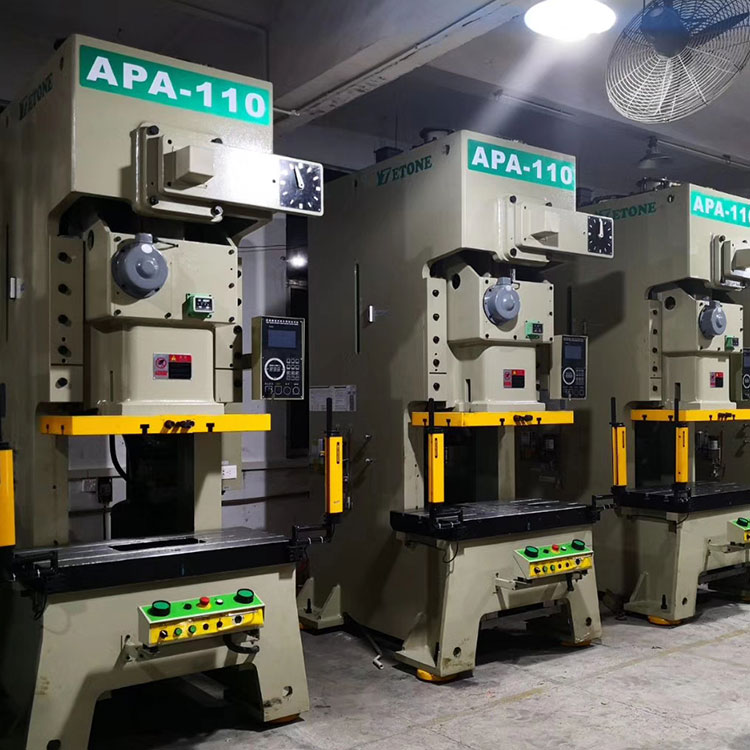The safe operating procedures of mechanical presses are an important measure to ensure the safety of operators and equipment. Here are some basic safe operating procedures:
1. Preparation before operation
Training: Ensure that all operators are professionally trained and familiar with the operating procedures and safety precautions of the press.
Inspect the equipment: Check the various parts of the press before operation to ensure that they are operating normally and there is no obvious damage or abnormality.
Wear protective equipment: Operators should wear appropriate personal protective equipment, such as safety glasses, protective gloves and work clothes.
2. Safety during operation
Keep clean: Keep the work area clean and avoid objects blocking the moving parts of the press.
Observe the operating procedures: Strictly follow the regulations in the operating manual and do not modify the equipment settings without authorization.
Use protective devices: Ensure that all safety protection devices such as protective covers and emergency stop buttons work properly and are in effective state during operation.
Prevent physical contact: Do not bring your hands or any part of your body close to dangerous areas such as the press head and mold during operation.
Attention signals: Before performing any operation, communicate clearly with colleagues and use gestures or other signals to ensure that both parties are aware of the operation process.
3. Emergency handling
Emergency stop: Understand and master how to use the emergency stop button or device to quickly stop the machine in the event of a fault or emergency.
Fault report: If you find any abnormality or fault in the equipment, stop the operation immediately and report it to the maintenance personnel. Do not continue to operate.
4. Precautions after operation
Power off: When maintaining or inspecting the press, ensure that the equipment is powered off and has appropriate lock marks.
Clean up the work area: After the operation, clean up the work area to ensure that there are no obstacles such as tools and workpieces left.
Record maintenance: Regularly record the maintenance and inspection of the equipment to ensure that the equipment is in good working condition.
5. Equipment maintenance
Regular inspection: Regularly perform equipment maintenance inspections, including lubrication, tightening and adjustment, to maintain the normal operation of the equipment.
Use qualified accessories: Use original or standard accessories during maintenance to avoid using unqualified parts.
6. Prohibitions
Prohibit non-professional tools: Do not use non-professional tools to adjust or repair the equipment.
No unauthorized modification: The equipment shall not be modified or the settings shall not be changed without the permission of professionals.
Disable non-compliant equipment: When equipment is found to have a serious malfunction, it should be removed from use until the problem is fixed.
